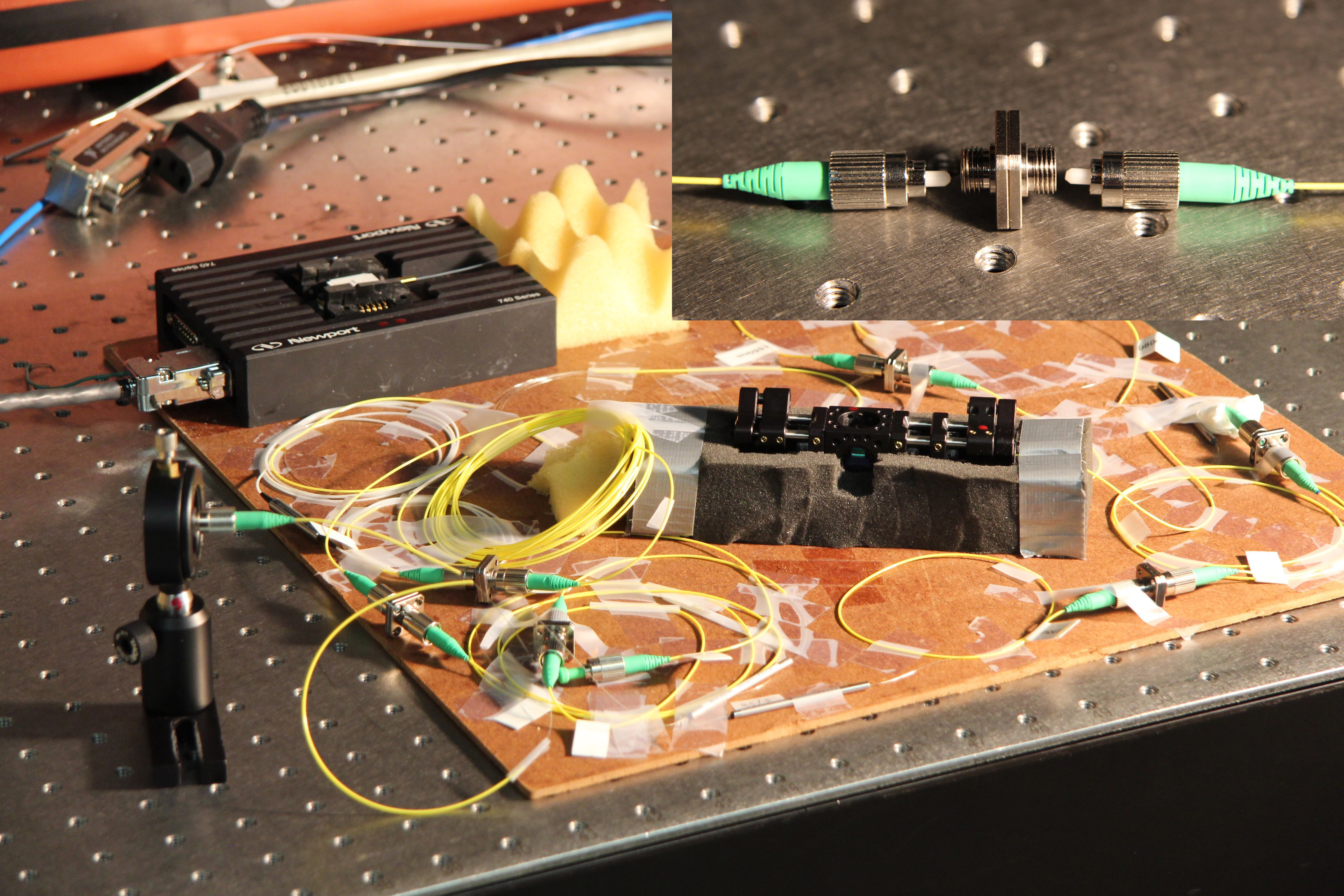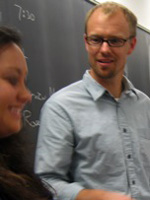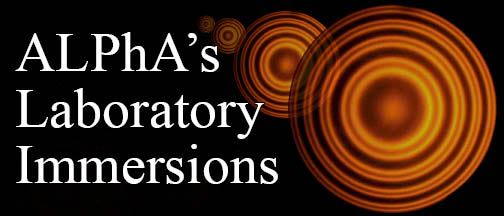- Home
- What We Do
- Laboratory Immersions
- Immersions 2018
- Imm2018Bethel_Ultrafast
Low Cost Ultrafast Optics with a Mode-Locked Erbium Fiber Laser
Bethel University, June 13–15, 2018
(One set-up) CLOSED

Mode-locked fiber lasers have emerged as a relatively low-cost, high performance tool. The list of ultrafast fiber laser applications is long and growing: multi-photon spectroscopy, frequency combs, pump-probe experiments, precision atomic and molecular spectroscopy, pulse shaping, astronomical measurements, precise length measurement, absolute frequency measurements, and microwave photonics. Fiber lasers have a small footprint (<1 m2) and use common telecommunications equipment such as high-power diode lasers that pump amplifiers and lasers. These factors mean that ultrafast fiber lasers can be efficiently brought into the important educational domains of the undergraduate and graduate-level advanced laboratory. Ultrafast technology is becoming increasingly important and yet is often not introduced until advanced and specialized graduate courses.

Fig. 2. Mode-locked erbium fiber laser. (Connector-based version not shown.) At upper left are the free-space polarization optics. At lower right is the glowing erbium gain fiber segment. The pump laser diodes are just above the glowing gain fiber in the figure.
Skills that will be acquired during this Immersion include fiber connector epoxying, polishing, cleaving and splicing, optical alignment and design, and familiarity with optical and RF spectrum analyzers. Participants will become familiar with Matlab and Mathematica routines that model ultrafast optical phenomena.
Participants will epoxy angled-face connectors (FC/APC) to single mode fiber and polish their faces. After careful connections with index matching fluid, connection losses will be measured and minimized. We will measure the laser slope efficiency (Pout vs. pump diode current) in continuous wave operation. Free-space polarization optics will be inserted into the cavity and adjusted to observe mode-locking. Mode-locked pulses will be characterized using an oscilloscope, timer/counter, a power meter and a home-built auto-correlation device. The pulse spectrum before and after mode-locking will be recorded on an optical spectrum analyzer. An external, parallel grating dispersion compensation apparatus will allow us to vary pulse chirp and compress it temporally. We will use a suite of Matlab and Mathematica routines to analyze the pulses and their spectra. If time allows, participants will substitute a length of carbon nanotube-coated tapered fiber into the laser cavity to induce modelocking, followed by full characterization of the laser output.
Participants are encouraged to bring a notebook. A laptop computer would be helpful to view, store and possibly analyze data. We will provide the coffee.
Laser safety glasses for laser light at 980 nm and 1550 nm will be provided.
A connector-based, 100 fs-level, mode-locked erbium fiber laser can be constructed for $3400. This includes fibers, telecom components such as output couplers and WDMs, pump diodes and drivers, detectors and polarization optics. This price does not include an oscilloscope, power meter, timer/counter, or spectrum analyzers. The auto-correlation apparatus can be built for ∼$2000, which includes precision retro-reflectors. The parallel grating dispersion compensation apparatus can be built for ∼$1600.
Follow this link to watch a video overview of this Immersion.
Host and Mentor:
Chad Hoyt is Associate Professor of Physics at Bethel University. Dr. Hoyt earned his Ph.D. in Optical Science from the University of New Mexico in 2003. His research comprised the first demonstration and analysis of optical cooling of thulium-doped solids. Chad has experience in laser cooling and trapping, as well as atomic, molecular and optical physics. He did post-doctoral work at the National Institute of Standards and Technology in Boulder, CO in the field of optical atomic clocks from 2003-2006. He helped build a system for cooling, trapping and spectroscopically probing ytterbium atoms with high precision. Since coming to Bethel University in 2006, Chad and his undergraduate research team have constructed a lithium magneto-optical trap and made spectroscopic measurements of the atoms at ∼500 microkelvin. Chad has helped develop and lead advanced lab-based courses in Optics and Lasers. Open-ended student projects in these courses have included nonlinear optics (Z-scan measurements, parametric downconversion), atomic and molecular spectroscopy, laser cooling and trapping, building HeNe lasers, holographic and interferometric measurements, quantum optics, fiber lasers, and precision measurements with physical optics. The fiber laser and frequency comb work is supported in part by NSF EIR grant #1208930.
Chad Hoyt, Associate Professor of Physics, Bethel University, Department of Physics, 3900 Bethel Dr. #2336, St. Paul, MN 55112. Email: hoycha@bethel.edu. Telephone: 651-638-6989.
Please note that the Jonathan F. Reichert Foundation has established a grant program to help purchase apparatus used in Laboratory Immersions. Limitations and exclusions apply, but generally speaking the foundation may support up to 40% of the cost of the required equipment.






